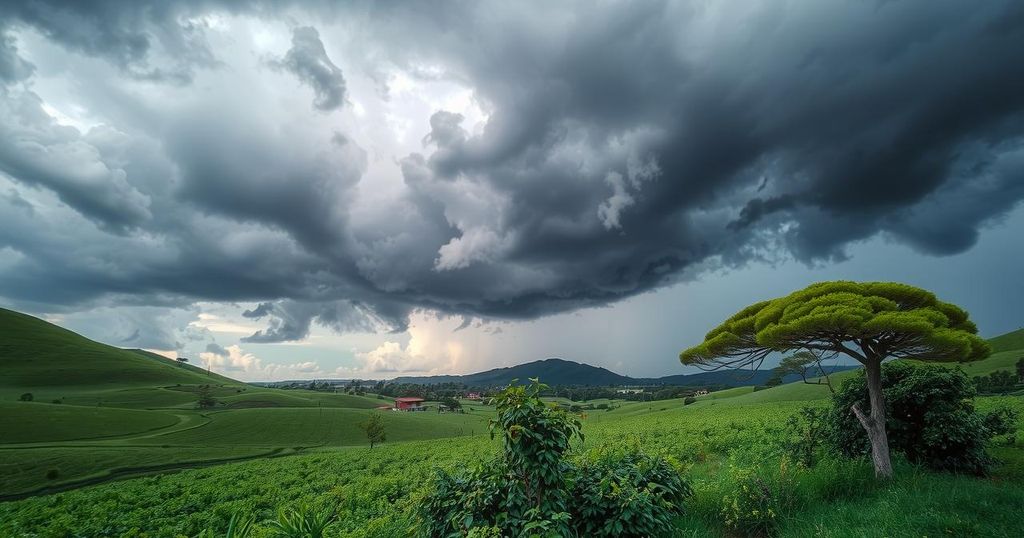Mozambique Braces for Heavy Rainfall Amid Ongoing Climate Challenges

INAM has announced moderate to heavy rains forecasted for Zambezia and Sofala provinces in Mozambique due to an approaching low pressure system. Risk areas have been identified, with ongoing impacts from climate change leading to destructive cyclones affecting the region. This situation calls for urgent preparedness measures to mitigate potential risks.
Mozambique’s National Meteorological Institute (INAM) has issued a warning regarding impending “moderate to heavy” rainfall in the central provinces of Zambezia and Sofala. This weather pattern is expected due to a low pressure system advancing toward the region, leading to periods of intense rainfall. Eight districts in Zambezia, including Quelimane, are identified as risk areas, while Sofala highlights risks in Marromeu, Beira, and others.
Additionally, the intertropical convergence zone is predicted to impact the northern regions of Mozambique, notably Nampula and Cabo Delgado. The current rainy season, spanning from October to April, has already seen cyclones that have caused significant damage, with Cyclone Dikeledi and Chido affecting thousands and resulting in substantial loss of life.
Mozambique is among the nations most vulnerable to climate change, experiencing recurrent flooding and tropical cyclones each rainy season. The country’s infrastructure and communities continue to struggle under the burden of these climatic events, highlighting the urgent need for adaptive measures to mitigate future impact.
This weather alert comes during Mozambique’s annual rainy season, which typically lasts from October to April and poses risks of severe weather events, such as flooding and cyclones. The weather patterns are heavily influenced by climate change, leading to increased frequency and intensity of tropical systems. Cyclones Chido and Dikeledi are recent examples of such climate-related disasters that have drawn national attention to the challenges Mozambique faces, reinforcing the need for preparedness and response strategies in susceptible areas.
The warning from INAM highlights the imminent threat of heavy rainfall in Mozambique’s central provinces and underscores the ongoing impact of climate change on the region. With multiple districts identified as risk areas, authorities must remain vigilant and prepared for possible flooding and its consequences. Overall, Mozambique’s vulnerability to extreme weather necessitates ongoing efforts for disaster risk management and climate resilience strategies.
Original Source: clubofmozambique.com






